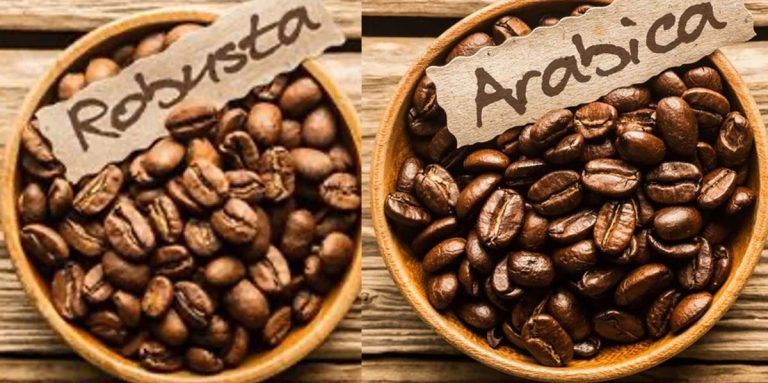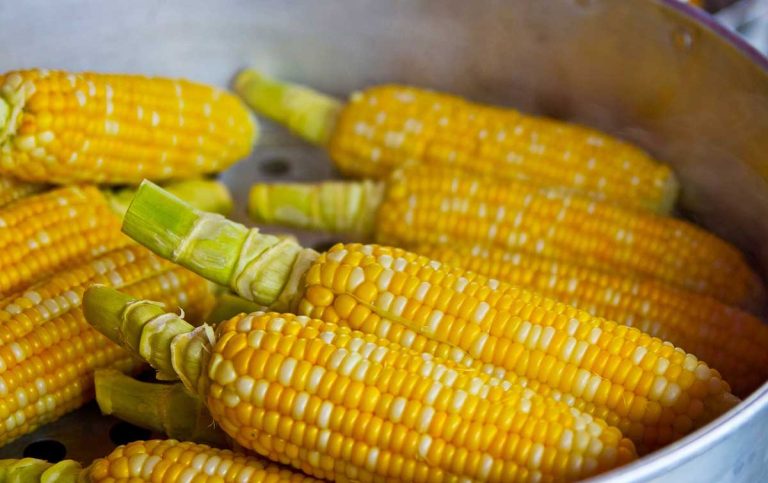Red Beans vs Kidney Beans: The Great Bean Showdown!
Welcome to the ultimate legume face-off: Red Beans vs Kidney Beans! If you thought these beans were just beans, think again mi amigo – these two red-colored contenders are here to shake things up in your kitchen. Sure, they may both be red, but that’s where the similarities end. It’s time to uncover the bean kingpin and answer the big question: which one deserves a spot in your next recipe?
On one side, we’ve got red beans, the small but mighty underdog with a smooth texture and a rich history in Southern cooking. On the other, the big, bold kidney beans, known for their firm bite and ability to hold their own in a hearty chili. Both pack a serious nutritional punch, but choosing the right bean for your dish could make or break your culinary masterpiece.
But who will come out on top in this legume clash? Well, buckle up! We’re about to break it all down – taste, texture, nutrition, and even their history. So let’s get this bean battle started and see who really rules the kitchen!
What Is Red Beans?

Red beans may be small, but don’t let their size fool you as they pack quite a punch! These little guys are like the underdogs of the legume world, quietly showing up in dishes and stealing the spotlight. With their bright red color and slightly sweet taste, they’re the life of the bean party. Whether they’re starring in a hearty stew, making cameos in your chili, or pulling off the ultimate combo in red beans and rice, these beans know how to keep things exciting in the kitchen.
The story of red beans starts way back in Central and South America, where they’ve been rocking the culinary world for thousands of years. These beans were so popular, they went on a world tour – spreading their fame through the Caribbean and beyond. They’ve made history in everything from Creole cooking to Mexican feasts, proving that no dish is too big or too small for these flavorful legume legends. Basically, red beans are like the cool kids of the bean family, showing up where they’re least expected and making everything tastier.
On the nutrition side, red beans are total overachievers. They’re packed with protein, fiber, and all sorts of vitamins that make your body say, “Thanks, I needed that.” Want to feel fuller longer? Red beans have your back with their high fiber content. Looking for a plant-based protein boost? Yep, they’ve got that covered too. They’ll slide into your soups, cozy up in stews, or add a pop of color to your salads – and they do it all while making you feel like you’ve got your healthy life together.
Oh, and just so you know, they also go by “small red beans,” depending on where you are. But no matter what you call them, these beans are ready to bring the flavor and fun to your plate. So, brace yourself – your meals just got a whole lot more interesting!
What Is Kidney Beans?

Kidney beans are the heavyweight champs of the bean world, strutting into your kitchen with their signature kidney shape and rich, reddish-brown color. These beans aren’t just bold in appearance; they’ve got a meaty texture and a slightly earthy flavor that makes them the perfect partner in hearty dishes. From slow-cooked chilies to flavorful salads, kidney beans don’t shy away from the spotlight. And don’t forget – they come in different varieties, from dark red to light red, so they can mix and match with your meals like bean fashionistas!
Historically, kidney beans have been around for quite a while, with roots tracing back to Central America. Ancient civilizations knew they were onto something good, and over time, these beans made their way across the world, from Latin American cuisines to European plates. Kidney beans became a staple ingredient not just because they’re filling, but because they can handle a variety of cooking methods – boiling, slow-cooking, you name it! The adaptability and heartiness of kidney beans helped them rise to culinary fame, earning them a spot in kitchen pantries everywhere.
When it comes to nutrition, kidney beans bring their A-game. They’re packed with plant-based protein, fiber, and essential vitamins like folate and iron, making them a go-to for health-conscious folks. Their fiber content keeps your digestive system running smoothly, while the protein boosts muscle repair and growth. Whether they’re adding bulk to a pot of chili or boosting the nutrition in a rice dish, kidney beans are versatile enough to fit into a range of cuisines. From Mexican enchiladas to classic three-bean salads, these legumes make a bold statement while keeping things healthy.
Also known as “red kidney beans” in some places, they occasionally go by other names, but at the end of the day, they’re all kidney beans doing what they do best – making meals heartier, healthier, and a whole lot tastier!
What Is the Similarities Between Red Beans and Kidney Beans? Let’s Spill the Beans!
Though red beans and kidney beans aren’t identical twins, they sure share a lot of family traits! So, let’s dive into what makes these two beans more alike than you might think.
Nutritional Powerhouses
Both red beans and kidney beans pack a punch when it comes to nutrition. They’re loaded with fiber, which keeps your digestive system happy and healthy, and they’re both excellent sources of plant-based protein. So if you’re on a mission to build muscle or just trying to stay fuller for longer, these beans have your back. Plus, they’re low in fat and packed with essential vitamins like iron and folate. So, nutritionally speaking, they’re both nutrient-packed heroes!
Culinary Stars
Red beans and kidney beans often end up on the same guest list when it comes to hearty meals. You’ll find them both popping up in soups, stews, chili, and even salads. Their firm texture means they can hold their shape during cooking, which is why they work so well in dishes that need that extra bite.
Similar Looks
One of the reasons people get confused between these two beans? They look pretty similar at a glance! Both red beans and kidney beans have that rich reddish color that throws people off. While kidney beans are a bit bigger and kidney-shaped (obviously), red beans share enough of that deep hue to make people do a double-take.
Flavor Profiles
While they may not taste exactly the same, they’re close enough that they’re often used interchangeably in recipes. Both beans have a mild, slightly nutty flavor, making them a versatile ingredient in various cuisines. Whether it’s a spicy Creole dish or next to a Tasso ham delight, these beans can handle the heat!
So, while they each have their own unique vibe, they share plenty of common ground when it comes to nutrition, culinary uses, appearance, and versatility in the kitchen.
Are Red Beans and Kidney Beans the Same?

Ah, the classic bean mix-up! Are red beans and kidney beans the same? Well, the short answer is – nope, they are not! While they may look like they could be twins separated at birth, they’re actually two different beans with their own distinct characteristics. The confusion is understandable, though – after all, they both have that reddish color that throws people off at first glance.
For instance, red beans are typically a lighter shade, while kidney beans show up with a deep, bold red that practically demands attention. And don’t get us started on the size difference! Kidney beans are bigger, and kidney-shaped (shocker, right?), whereas red beans are smaller and rounder.
What’s more, in the culinary world, they shine in different arenas too. Red beans are a favorite in Creole cuisine, especially in dishes like red beans and rice, while kidney beans love to take center stage in chili and hearty salads. So, even though they have some similar traits, they’re not completely interchangeable as each bean brings its own unique flavor and style to the table!
What Is the Difference Between Red Beans and Kidney Beans?
In one corner, we have the underdog red beans, and in the other, the heavyweight champion, kidney beans! These two legume legends may look like they were separated at birth, but let’s not be fooled – each bean has its own unique flavor, texture, and culinary calling. So, if you’ve ever stood in the grocery aisle wondering which bean to grab (or just want to impress your friends with some fun facts), strap in as we uncover the distinct and tasty differences between red beans vs kidney beans!
Appearance
When it comes to looks, red beans and kidney beans are like two actors auditioning for the same role – both have talent, but they bring different styles to the table! Red beans are smaller, rounder, and boast a lighter, reddish-brown shade.
In contrast, kidney beans are the show-offs of the group – larger, kidney-shaped, and flaunting a bold, deep red color. So, if you’re ever in a bean identity crisis, just remember: if it’s round and lighter, it’s probably a red bean; if it’s kidney-shaped and vibrant, it’s a kidney bean!
Taste and Texture
In the taste department, these beans have their own unique personalities. Red beans offer a mild, slightly sweet flavor, while kidney beans bring a heartier, earthier profile to the table. As for texture, red beans are creamy and smooth when cooked, making them perfect for blending into dishes.
Kidney beans, on the other hand, have a firmer bite that can hold its own in stews and salads. Both add their special flair, but each has its standout moment!
Cook Time
Cooking times can be a bean’s best friend or worst enemy! Red beans typically take about 30-45 minutes to cook until tender, while kidney beans need a bit more love, simmering for 45-60 minutes.
Why the difference? Kidney beans are larger and denser, which means they need a little extra time to soften up. So, when you’re planning your next culinary masterpiece, remember to give your kidney beans that extra love and attention!
Cost
When it comes to cost, you might find red beans and kidney beans holding hands at the grocery store. Generally, they’re priced similarly, but it can vary based on brand and location.
Red beans often come in slightly cheaper due to their availability in certain regions, especially in Creole dishes. However, kidney beans are popular in chili and salads, making them a pantry staple. So, your wallet might not notice a huge difference, but your taste buds will!
Best Uses
Each bean shines in its own culinary spotlight! Red beans are the stars of classic Creole dishes, like red beans and rice, and they blend beautifully into soups and casseroles. They’re also perfect for making bean dips that are creamy and flavorful.
Kidney beans, on the other hand, love to strut their stuff in hearty chili, where their firm texture can stand up to spices and simmering. They also shine in salads and rice dishes, adding both color and a protein boost. So, whether you’re in the mood for spicy or cozy, these beans have your back!
Which Bean Has More Nutritional Value? Red Beans vs Kidney Beans

Now, let’s go into the epic nutritional showdown! In one corner, we have the dependable red beans, standing tall and ready to impress. In the other corner, we’ve got the mighty kidney beans, flexing their muscle and bringing the flavor! But who will take home the title of the ultimate nutritional champion? Let’s find out!
Here is a chart that showcases the nutritional values of ½ cup of cooked red beans and kidney beans:
| Nutrient | Red Beans (½ Cup) | Kidney Beans (½ Cup) |
| Carbs | 20g | 28g |
| Fiber | 6.5g | 8.5g |
| Protein | 8g | 9g |
| Fat | 0g | 0g |
| Sodium | 9mg | 2mg |
| Iron | 2.3mg | 2.6mg |
| Magnesium | 60mg | 40mg |
| Phosphorus | 193mg | 125mg |
| Copper | 0.34mg | 0.21mg |
| Manganese | 0.65mg | 0.42mg |
| Folate | 139mg | 115mg |
When it comes to nutritional value, these two legumes are practically neck and neck – like a race between a tortoise and a slightly faster tortoise! Both beans are powerhouses of protein, fiber, and essential vitamins.
In the fiber department, kidney beans take the lead, offering a bit more to help keep your digestive system running smoothly. But red beans aren’t slacking off! They bring the folate and phosphorus game strong, making them great for your health. So, if you’re team red or team kidney, you’re in for a nutritious treat. The real winner? That’s for you to decide – just make sure to enjoy them both!
Final Thoughts
And there you have it, folks! The epic bean battle between red beans and kidney beans has reached its thrilling conclusion. While these two legumes may look like they belong to the same family reunion, their unique traits make them special in their own quirky ways. Red beans bring that smooth, creamy vibe to the party, while kidney beans flex their robust size and hearty texture, perfect for when you want to feel full and fabulous.
In the great kitchen of life, both beans deserve a spot on your plate. Whether you’re whipping up a spicy chili or a cozy bean salad, these little nutritional powerhouses will have your back. So next time you’re faced with the red bean versus kidney bean dilemma, remember: each has its charm. Embrace the bean love and keep cooking up deliciousness – because at the end of the day, it’s all about good food and great flavors!
Frequently Asked Questions
Are Kidney Beans Red Beans?
In short, no. While kidney beans are often red, they are not the same as red beans. Kidney beans have a distinctive kidney shape and a deep red color, while red beans are smaller and rounder with a lighter shade of red. So, they’re related but not identical twins in the bean world!
Can I Substitute Red Beans for Kidney Beans?
You sure can! While they may not be identical twins, red beans and kidney beans can still pull off a great swap in most recipes. Just remember, kidney beans might add a little more size and a slightly different texture, but your dish will still be delicious – bean-tastic, even!
Are Red Beans Healthy?
Oh, you betcha! Red beans are small nutritional titans packed with fiber, protein, and essential vitamins. They’ll keep your digestive system happy and your belly full. So go ahead, sprinkle them into your meals guilt-free – your body will thank you for this tasty treat!
Which Is Better, Red Beans or Kidney Beans?
Ah, the classic bean debate! When it comes to Red Beans vs Kidney Beans, it all boils down to your taste buds and the dish at hand. Both beans bring their unique flavors and nutritional benefits to the table. If you’re after a slightly sweeter flavor, red beans might be your go-to. But if you prefer a firmer texture, kidney beans could be your champion! So whether you’re team red or team kidney, embrace the legume love and savor the flavor in every bite!







